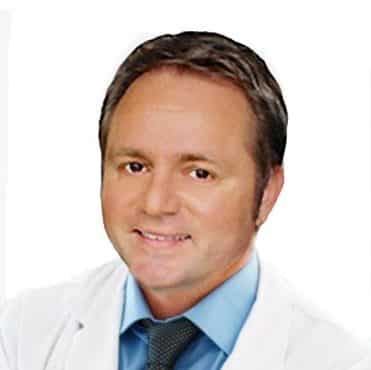The Clinic for Maxillofacial Surgery is part of the University Cancer Center certified by the German Cancer Society. This guarantees individual treatment of patients in accordance with the latest scientific findings.
Soft tissue cysts, upper and lower jaw
According to the origin of cysts, odontogenic, i.e., cysts originating from teeth, and non-odontogenic are distinguished. Cysts in the bone must be surgically removed or at least opened in order to prevent further growth and possible fracture of the bone. Reliable differential diagnosis of a cyst from other diseases or tumors is possible only with a histological examination of the tissue. For this reason, in the vast majority of cases, the goal is complete removal of the cysts. Removal of small cysts in the jaw area is possible on an outpatient basis under local anesthesia. In the case of extensive cysts, the bone cavities of which must be filled with their own bone tissue for faster regeneration, hospitalization is necessary. In addition to bone cysts, other types of soft tissue cysts should also be surgically removed: retention cysts, atheromas, dermoid and epidermoid cysts, as well as lateral and median cysts of the neck. Retention cysts of the maxillary sinuses are usually removed as part of an operative revision of the maxillary sinus.
benign tumors
Benign tumors of the head and neck can occur in the skin/connective tissue (fibromas), in adipose tissue (lipomas), in muscle (myomas), in nervous tissue (neurinomas), in bone (osteomas), in cartilage (chondromas), and in salivary gland tissue (adenomas) or originate from blood vessels (hemangiomas) or lymphatic vessels (lymphangiomas).
Since some benign tumors can become malignant or lead to complications (eg, bleeding from hemangiomas), removal (or at least reduction in size in the case of hemangiomas or lymphangiomas) is indicated in many cases. Depending on the type and location of the tumor, benign growths can also be reduced in size or removed using laser surgery, photodynamics, or sclerotherapy (eg, hemangiomas, lymphangiomas).
In all cases, a histological examination is mandatory.
Precancerous diseases of the oral mucosa
Any changes in the oral mucosa should be examined by a dentist or maxillofacial surgeon in a specialized clinic.
The purpose of the examination is the exclusion and early diagnosis of oncological pathology of the oral cavity and many precancerous diseases: leukoplakia, erythroplakia, lichen planus of the oral cavity, etc.
The main diagnostic method is the histological examination of areas of altered mucosa obtained by excision or brush biopsy (non-invasive and painless method).
For minor benign changes, treatment may not be required, but regular monitoring is necessary. Some diagnoses require surgery or drug therapy.
In addition to the possible surgical and medical treatments, our specialists offer a gentle therapeutic approach using laser therapy. Many diseases of the oral mucosa can be removed using the most modern laser devices under local anesthesia.
Malignant tumors
Malignant tumors are called carcinomas or sarcomas, depending on the type of tissue from which they originate. Like benign tumors, they can develop in all types of tissues in the head and neck: in the mucous membranes of the oral cavity, salivary glands, maxillary sinuses, skin, and also in the bones of the skull.
After carrying out all the necessary diagnostic measures, such as biopsy, histological examination, sonography, panendoscopy, CT, MRI, etc., in order to determine the tactics of further treatment for each specific case, an oncological conference is held with the participation of maxillofacial surgeons, radiologists, radiation specialists. and chemotherapy.
A radical method of treating malignant diseases is the surgical removal of the tumor, in many cases it is also necessary to remove the lymph nodes in the neck (lymph node dissection).
Depending on the type and stage of the tumor, postoperative radiation and/or chemotherapy is prescribed, which can significantly improve the prognosis of the disease. However, for example, such postoperative adjuvant radiochemotherapy is the standard for extensive oral cavity carcinomas, it is used much less often for most malignant tumors of the facial skin.
In the treatment of progressive or recurrent/metastatic squamous cell carcinomas of the oral mucosa, the most promising treatment is with monoclonal antibody preparations, in combination with radiotherapy or chemotherapy.
Video
Request appointment
Useful links
Photo gallery







